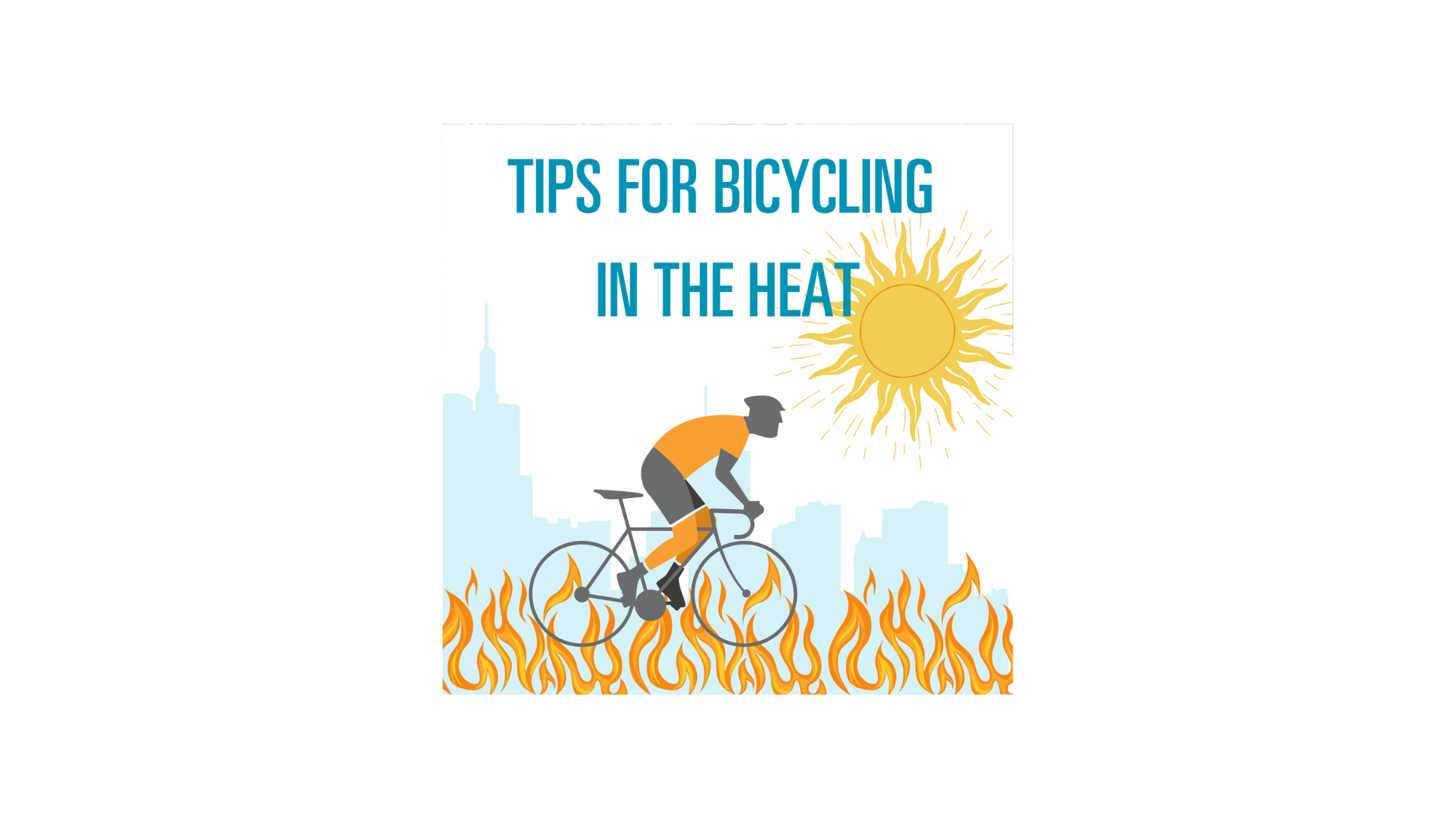
Heat can have its benefits, such as a mild winter, there rarely being a freeze or snow (the last good snow storm was a light dusting in 2008), and the growing season for plants is nearly year-round. A drawback to the subtropical climate is that trying to do anything outside in the hot months can lead to a feeling of heat exhaustion.
Regardless of the climate, people adapt to the weather and life goes on. People in New Orleans bicycle year-round for exercise, commuting, and just plain fun. To do this, there are ways to ensure that you take care of yourself while bicycling on the hottest of days. Overheating can lead to a dizziness, nausea, headaches, and even worse, heat stroke which can be deadly. The following is a guide to how to best prepare yourself to bicycle in the heat and humidity that New Orleanians are all so familiar with.
TIME OF DAY
Bicycling in the early morning or evening can help reduce the impact that the heat has on people riding. Although people who utilize a bicycle for commuting cannot pick and choose when to ride, those who are riding for exercise and fun can choose times which are more formidable.
ROUTE PLANNING
New Orleans has many tree-lined streets that offer shade and relief from being in the direct sun. Examples of shady streets include St. Charles, Ursulines, Esplanade, and Carrollton Avenues. Although there is less shade along the waterfronts (the river and the lake) a benefit can be the breeze and airflow that comes with being near bodies of water.
STAY HYDRATED
It is imperative to always drink water (but not too much!) while exercising, especially in the sun and heat. Dehydration is a common reason for heat exhaustion and strokes. Always carry water with you when going out to bicycle during the hot months. Some water bottles are insulated to keep water cool while outside. Some people add salt to their water for added electrolytes to help the body retain liquids.
WATER IS NOT SIMPLY FOR DRINKING
Consider bringing extra water for pouring over your head from time to time. This simple procedure can quickly reduce a person’s internal temperature and is especially useful in cases of emergencies when dealing with heat exhaustion. Some people recommend freezing water bottles ahead of time to have cold water throughout a ride.
BICYCLING GEAR
It is important to wear clothing that is breathable. Some fabrics are specially designed to allow air flow and keep people cooler. Many bike shops carry clothing that can make bicycling easier. Also, consider helmets with many cooling vents as well as a visor to keep the sun off the face.
SUN PROTECTION
Sunscreen and sunglasses are a great way to protect yourself from harmful UV rays that lead to sunburns. It is important to get the correct SPF and UV protection when going outside on a bicycle.
TAKE BREAKS
It is important not to overexert yourself while bicycling. Be sure to take breaks in the shade or go into businesses with air conditioning to cool down from time to time. If you have a long commute, factor in extra time to make a stop or two along the route.
Please consider these tips when leaving your home to bicycle during these hot summer months. By following these guidelines, you can greatly reduce the impact that the heat has on your body and protect yourself. There is no need to stop bicycling in the heat, but there is more need to be prepared before going out.
See you in the heat! See you on the streets!

